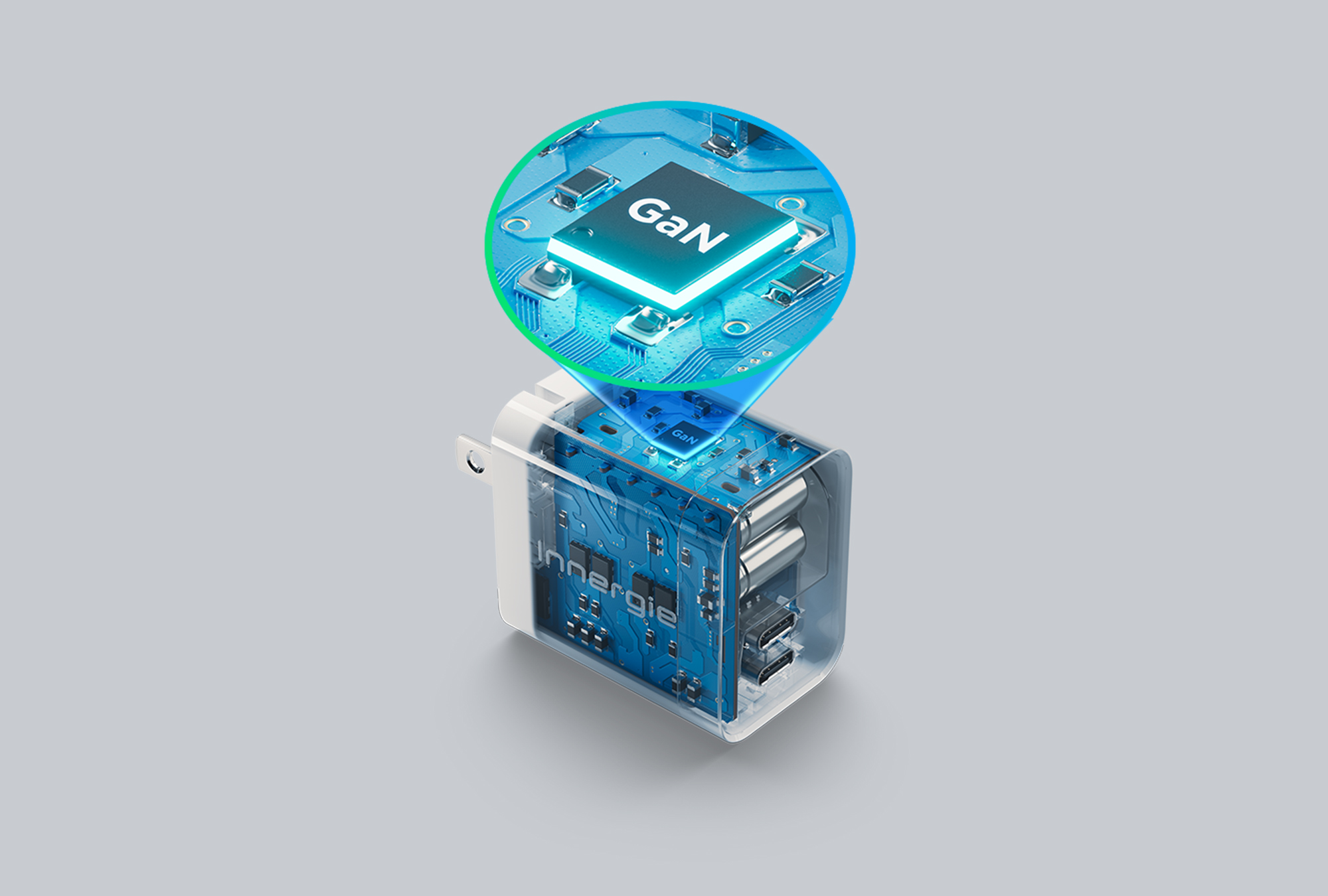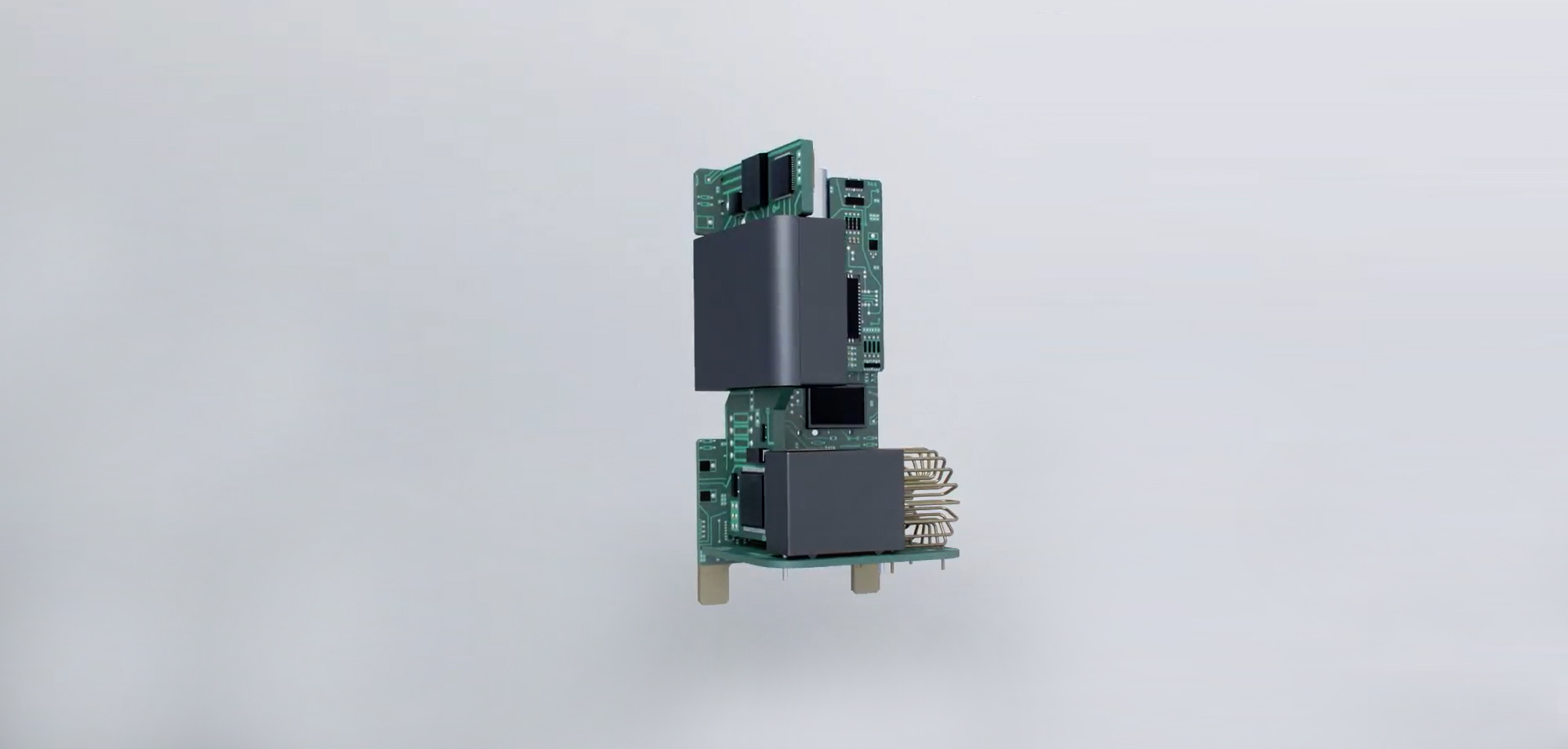

Mobile phone chargers had only 2.5-5 watts before, but now we have chargers easily reach 30-65 watts or even higher while maintaining a compact and portable size. What is the mystereous compoment to make this happen?
In response to the modern demand for fast, compact, and convenient charging behavior, many chargers in the market now feature the use of “Gallium Nitride (GaN),.” It is a semiconductor material commonly used in the manufacturing of electronic and optoelectronic components.
The primary reasons for the application of GaN in chargers are its high conversion efficiency, high-frequency operation capability, low heat dissipation. It allows chargers to be more portable while delivering efficient high-power charging. (Read More: Is Gallium Nitride (GaN) just a marketing gimmick?)
Chargers that adopts GaN technology, compared to traditional silicon-based chargers, can more effectively convert power and reduce energy loss. When chargers are designed to be more streamlined and compact, yet capable to fast-charge, they become the ideal travel companions for people in the fast-paced digital world.

Let’s take a look at the history of charger development:

Linear charger transforms the standard 110V/220V AC alternating current, using a transformer with different numbers of turns in its “input” and “output” coils. This generates alternating current with a different voltage. The process includes voltage reduction, followed by the conversion of alternating current into direct current, which is then utilized for charging.
Linear charger features a simple design but with lower efficiency. They were often larger, heavier, and had significant energy conversion losses.
With technological advancements, ‘’switching chargers’’ gradually replaced linear chargers. It adopted “silicon semiconductor materials” for high-frequency switch transformers. Convert 60Hz AC power to direct current and utilize silicon semiconductor switches to transform the frequency into a high-frequency AC power of 50 KHz. Perform voltage transformation to reduce energy loss, thereby improving efficiency, minimizing heat generation, and reducing the overall size.
In switch chargers, the use of “silicon semiconductor” can only reach at a certain frequency (around 100 kHz) results in a significant drop in conversion efficiency. Therefore, the focus has shifted to Gallium Nitride (GaN) semiconductor, known for its excellent electrical characteristics (GaN has three times higher energy gap than silicon).
GaN chargers then have high conversion efficiency, high-frequency operation capability, and low energy dissipation. This material enables chargers to be more compact, lightweight, while providing efficient high-power charging.
The progression from linear to switching chargers and finally to GaN chargers reflects the ongoing advancements in charging technology, aiming for enhanced efficiency, reduced size, and improved performance.
Innergie’s coming C4 Duo and upgraded C6 Duo II incorporate GaN components, utilizing Delta Electronic’s “Ancora” 3rd generation GaN semiconductor, which offers high efficiency, energy savings, and a compact design that saves space. What makes it even more special is – C6 Duo II has applied Innergie’s exclusive use of Post-Consumer Recycled (PCR) plastics on charger surfaces, reducing environmental impact in material usage and achieving a significant upgrade in eco-friendly carbon reduction!
| Cookie | Duration | Description |
|---|---|---|
| cookielawinfo-checkbox-analytics | 11 months | This cookie is set by GDPR Cookie Consent plugin. The cookie is used to store the user consent for the cookies in the category "Analytics". |
| cookielawinfo-checkbox-functional | 11 months | The cookie is set by GDPR cookie consent to record the user consent for the cookies in the category "Functional". |
| cookielawinfo-checkbox-necessary | 11 months | This cookie is set by GDPR Cookie Consent plugin. The cookies is used to store the user consent for the cookies in the category "Necessary". |
| cookielawinfo-checkbox-others | 11 months | This cookie is set by GDPR Cookie Consent plugin. The cookie is used to store the user consent for the cookies in the category "Other. |
| cookielawinfo-checkbox-performance | 11 months | This cookie is set by GDPR Cookie Consent plugin. The cookie is used to store the user consent for the cookies in the category "Performance". |
| viewed_cookie_policy | 11 months | The cookie is set by the GDPR Cookie Consent plugin and is used to store whether or not user has consented to the use of cookies. It does not store any personal data. |